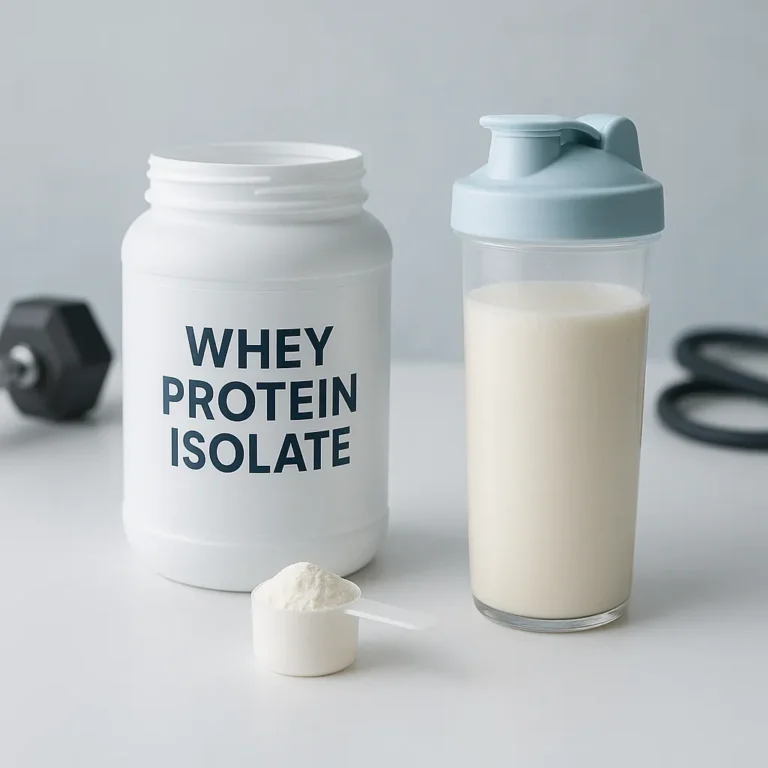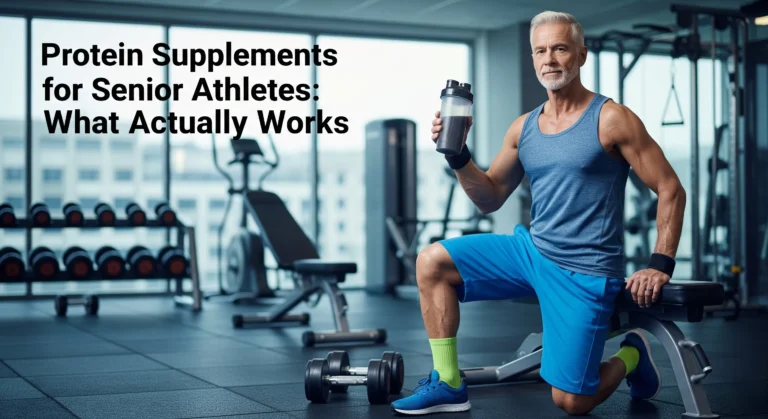
Did you know that 73% of protein supplements don’t contain the exact amount of protein listed on their labels? I learned this the hard way after spending hundreds of dollars on “premium” protein powders that barely moved the needle on my gains!
Reading protein supplement labels used to feel like decoding ancient hieroglyphics to me. But after years of trial and error (and some expensive mistakes), I’ve cracked the code. Today, I’m going to teach you exactly how to read these labels like a seasoned expert, so you never waste money on subpar supplements again.
Understanding the Supplement Facts Panel
Man, I wish someone had taught me this stuff when I first started lifting. I remember staring at those supplement facts panels like they were written in a foreign language, completely clueless about what any of it meant.
The serving size is where most people get tricked right off the bat. I’ve seen companies list a “serving” as half a scoop just to make their protein content look more impressive per serving. Always check if the serving size matches what you’d actually use. If a protein powder says 25g of protein per serving, but the serving is only 15g of powder, that’s actually pretty decent. But if they’re claiming 25g of protein from a 50g serving, you’re looking at a product that’s only 50% protein by weight.
Here’s something that blew my mind when I first learned it – ingredients are listed by weight in descending order. So if you see a protein powder where whey protein isolate is listed third after maltodextrin and natural flavors, you’re basically buying expensive flavored sugar with some protein thrown in. The first ingredient should always be your actual protein source.
I always calculate the actual protein per dollar now, and it’s saved me tons of money. Take the total grams of protein in the container, divide by the price, and you’ll get your cost per gram. Anything over 4 cents per gram of protein is getting into expensive territory, unless there’s a really good reason for it.
One red flag I’ve learned to spot immediately is when companies don’t clearly state the type of protein they’re using. If it just says “whey protein” without specifying concentrate, isolate, or hydrolyzed, they’re probably using the cheapest concentrate they can find and hoping you won’t notice.
Decoding Protein Types and Quality Indicators
This section used to confuse the hell out of me, but once you understand the basics, it becomes pretty straightforward. Think of protein types like different grades of gasoline – they’ll all get you where you’re going, but some are definitely more refined than others.
Whey concentrate is your regular unleaded – it’s usually 70-80% protein by weight, with some lactose and fat still hanging around. It’s cheaper because it’s less processed, but it can cause digestive issues if you’re sensitive to lactose. I learned this lesson the hard way during a particularly gassy week that my gym buddies still remind me about.
Whey isolate is your premium gas – it’s at least 90% protein by weight with most of the lactose and fat removed. It costs more, but it’s worth it if you have stomach issues with concentrate or if you’re trying to keep calories really tight. The processing removes a lot of the stuff that can cause bloating and digestive discomfort.
Plant proteins are trickier to evaluate because most single plant sources don’t have complete amino acid profiles. That’s why you’ll see blends of pea, rice, and hemp proteins – they’re trying to create a complete amino acid profile by combining different sources. If you see a plant protein that’s just one source, check if they’ve added individual amino acids to complete the profile.
The amino acid profile matters way more than most people realize. Your body needs all nine essential amino acids to actually build muscle protein. If you’re missing any of them, it’s like trying to build a house with only seven of the eight materials you need – it just won’t work properly.
PDCAAS and DIAAS scores are getting more common on labels now. These measure how well your body can actually use the protein. A score of 1.0 is perfect, and anything above 0.9 is considered high quality. Most animal proteins score close to 1.0, while plant proteins usually score lower unless they’re carefully blended.
Spotting Marketing Tricks and Misleading Claims
Oh boy, this is where companies really try to pull fast ones on unsuspecting customers. I’ve fallen for more of these tricks than I care to admit, and each one taught me something new about how sneaky supplement marketing can be.
“Proprietary blends” are usually a giant red flag waving right in your face. When a company won’t tell you exactly how much of each ingredient they’re using, it’s because they don’t want you to know. They might list five expensive-sounding ingredients, but for all you know, 99% of the blend is the cheapest one and the rest are just there for show.
I once bought a “revolutionary” protein blend that claimed to have six different protein sources. Turns out, whey concentrate made up like 90% of it, and the other five “premium” proteins were barely detectable. The company wasn’t technically lying, but they sure weren’t being honest either.
Protein spiking is another dirty trick that’s more common than you’d think. Companies add cheap amino acids like glycine, taurine, or creatine to artificially inflate the total nitrogen content, which makes the protein content appear higher in lab tests. These amino acids are way cheaper than actual complete proteins, so it’s basically legal fraud.
“Clinically proven” sounds impressive until you realize that the study might have been done on 12 college students over two weeks, or it might have been funded by the company selling the product. Always look for third-party research that wasn’t paid for by the manufacturer.
The worst part about these marketing tricks is that they specifically target people who are new to fitness and don’t know what to look for yet. I remember feeling so overwhelmed by all the claims and promises that I just bought whatever had the flashiest label and most impressive marketing copy.
Reading the Fine Print: Hidden Ingredients to Watch
This is where label reading gets really important for your health, not just your wallet. I’ve learned to scan the ingredient list like a hawk because there’s some stuff in there that can really mess with you if you’re not careful.
Artificial sweeteners are everywhere in protein powders, and while they’re generally safe, some people have really bad reactions to them. Sucralose gives me headaches, and I didn’t figure this out for months because I wasn’t connecting the dots. Acesulfame potassium can leave a weird metallic aftertaste that lingers for hours.
Sugar alcohols like sorbitol and maltitol can cause serious digestive issues if you consume too much. I learned this during what I now call “the great stomach rebellion of 2019” when I was drinking two protein shakes a day with maltitol. Let’s just say I spent way more time in the bathroom than I care to remember.
Fillers and bulking agents like maltodextrin, dextrose, and corn starch are basically just cheap carbs that companies use to make their products weigh more without adding much cost. A little bit is fine, but if these are among the first few ingredients, you’re paying protein prices for sugar.
Watch out for hidden allergens too. “Natural flavors” can contain dairy derivatives even in supposedly vegan products. I’ve seen people with severe allergies get caught off guard because they didn’t read carefully enough. Cross-contamination warnings are there for a reason.
Preservatives like sodium benzoate and potassium sorbate are generally safe, but some people are sensitive to them. If you notice any weird reactions after switching protein powders, check if they use different preservatives than your old brand.
Comparing Labels to Find the Best Value
This is where the rubber meets the road – actually figuring out which protein powder gives you the most bang for your buck. I’ve developed a pretty systematic approach to this over the years, and it’s saved me hundreds of dollars.
First, always calculate cost per gram of actual protein, not cost per serving or cost per container. I grab my phone calculator right there in the store and do the math. Total grams of protein divided by total price equals cost per gram. Anything under 3 cents per gram is a great deal, 3-4 cents is decent, and above 4 cents better have some really good reasons.
But price isn’t everything. A slightly more expensive protein that mixes better, tastes better, and doesn’t cause digestive issues is worth the extra cost. I used to buy the cheapest protein I could find, and I’d spend half my day dealing with chalky, clumpy shakes that made me feel bloated.
Third-party testing is huge for me now. If a company pays an independent lab to verify their protein content and test for contaminants, they’re usually confident in their product quality. NSF, Informed Sport, and USP are the main certifications to look for.
Sometimes generic brands from reputable manufacturers are actually made in the same facilities as the name-brand stuff, just with different labels. I’ve found some amazing deals on store brands that were literally identical to products costing twice as much.
Don’t get fooled by fancy packaging or Instagram sponsorships either. Some of the best proteins I’ve used come in boring white containers with basic labels. Companies that spend tons on marketing usually have to make up that cost somewhere, and it’s often in the product quality.
Common Label Reading Mistakes to Avoid
Even after years of doing this, I still catch myself making dumb mistakes sometimes. But these are the big ones that I see people mess up over and over again.
The biggest mistake is focusing only on the protein grams per serving without considering anything else. I used to do this all the time – I’d see “30g protein!” and immediately assume it was better than something with 25g. But if that 30g comes from a 60g serving of mostly fillers, while the 25g comes from a 30g serving of pure protein, the second option is obviously better.
Serving size confusion gets everyone at some point. Companies love to make their serving sizes smaller to make their numbers look better. I always check how many servings are in the container and do the math to see what I’m actually getting for my money.
Another thing I screwed up for way too long was not paying attention to mixability and taste. You can have the perfect protein on paper, but if it tastes like chalk dust and requires a blender to mix properly, you’re probably not going to stick with it. I wasted so much money on proteins that sat in my cabinet because they were too gross to drink.
Expiration dates matter more than people think, especially with natural products that don’t have tons of preservatives. I learned this lesson when I bought a huge container of protein powder on sale, only to realize it expired in two months. There’s no way I was going through five pounds of protein that fast.
The worst mistake though is falling for influencer recommendations without checking the labels yourself. Just because your favorite fitness YouTuber swears by a particular brand doesn’t mean it’s actually good. Half the time they’re just getting paid to promote it, and they might not even use it themselves.
Conclusion
Reading protein supplement labels doesn’t have to be rocket science, but it does require knowing what to look for. The supplement industry isn’t always looking out for your best interests, so being an informed consumer is your best defense against wasting money on inferior products.
Remember, the cheapest option isn’t always the worst, and the most expensive isn’t always the best. By focusing on protein quality, ingredient transparency, and third-party testing, you’ll make smarter choices that actually support your fitness goals.
Start applying these label-reading skills on your next supplement shopping trip, and don’t be afraid to put that “premium” protein back on the shelf if it doesn’t meet your new standards! Your wallet and your gains will thank you.
The key is to approach every protein powder purchase like a detective. Look beyond the flashy marketing, dig into the actual facts, and trust your own analysis over whatever the company wants you to believe. Once you get good at this, you’ll never get fooled by supplement marketing again.



